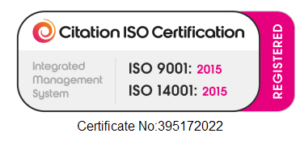Bullying and Harassment Policy
LOGIN Construction Services LTD
Version 1.2 April 2022 Policy Reference: POL-PPL-004
1. Introduction
1.1 We are committed to the fair treatment of everyone regardless of age, colour, disability,
ethnicity, gender, nationality, race, religious or spiritual beliefs, sexual orientation, gender
reassignment or gender identity or any other personal characteristic.
1.2 Under the Health & Safety at Work Act 1974, we have a duty to provide everyone with a
safe place and system of work. This includes a workplace free from bullying and harassment
which may, in certain circumstances, also amount to unlawful discrimination.
2. Purpose
2.1 It is our aim to ensure that everyone is treated with dignity and respect, free from
harassment or other forms of bullying at work and, to provide a working environment where
employees feel safe, work effectively, confidently, enjoying their work and fulfilling their
personal potential.
2.2 This policy sets out examples of the type of conduct that may constitute harassment or
bullying and our commitment to eliminating such conduct.
2.3 It should be read in conjunction with the Company Code of Conduct and other company
policies so that you can familiarise yourself with what is expected of you and those around
you.
3. Scope
3.1 This policy covers bullying or harassment which occurs both in the workplace and in
settings outside the workplace, such as on social media, business trips, events, social
functions organised for or on behalf of us and whether on or off our premises.
3.2 This policy applies to all fixed term and permanent employees. However, that does not
mean that we will not follow up any issues raised by or about 3 rd parties such as
contractors, agency workers, consultants and customers.
3.3 This policy should be read in conjunction with our Equality, Diversity & Inclusion policy.
3.4 This policy does not form part of any contract of employment and we may amend it at
any time.
4. Principles
4.1 We will not tolerate bullying or harassment for any reason. It is the responsibility of all
employees to encourage and maintain an environment that is free from bullying and
harassment by treating their colleagues with dignity and respect. Every employee should
consider whether their words or conduct could be offensive to others; even unintentional
bullying or harassment is unacceptable.
4.2 The Equality Act 2010 defines harassment as ‘unwanted conduct that is related to a
relevant protected characteristic, which has the purpose or effect of violating an individual’s
dignity or creating an intimidating, hostile, degrading, humiliating or offensive environment
for that individual.
4.3 Harassment often (but not exclusively) targets the gender, sexual orientation, marital or
civil partner status, gender reassignment, gender identity, race, colour, nationality, ethnic or
national origin, religion or belief, disability or age of a victim. A single incident of unwanted or
offensive behaviour to one individual can amount to harassment.
Examples of Harassment include:
• Unwanted physical conduct or “horseplay” (touching, pinching, pushing or bruising,
invading personal space, groping, shoving, punching);
• more serious forms of physical or sexual assault;
• unwelcome sexual behaviour (flirting, suggestive comments, advances, propositions or
pressure for sexual activity);
• suggestions of sexual favours (to further career or that may hinder it);
• continued suggestions for social activity (if already been unwelcomed);
• Inappropriate behaviour (offensive or intimidating comments, gestures, jokes or pranks);
• pornographic material (sending, displaying, emails, texts, video clips, photography, mobile
phone or internet); • Ignoring or shunning.
• Mis-gendering or using a person’s dead name.
4.4 The complainant need not possess the relevant characteristic themselves and can be
because of their association with a person who has a protected characteristic, or because
they are wrongly perceived to have one, or are treated as if they do.
4.5 Harassment applies to all protected characteristics except for pregnancy and maternity
where any unfavourable treatment may be considered discrimination, and marriage and civil
partnership where there is no significant evidence that it is needed.
4.6 Bullying may be characterised as offensive, intimidating, malicious or insulting behaviour,
which involves an abuse or misuse of power over another person through negative acts or
behaviour that undermines humiliates, denigrate or injures them personally and/or
professionally. Bullying is often a form of harassment and can undermine self-confidence,
competence and self-esteem. Examples of Bullying include:
• Shouting at, being sarcastic towards, ridiculing or demeaning others;
• physical or psychological threats;
• overbearing and intimidating levels of supervision;
• Inappropriate and/or derogatory remarks about someone’s performance;
• abuse of authority or power by those in positions of seniority;
• unjustifiably excluding colleagues from meetings or communications;
• cyber bullying, where bullying, harassment and victimization is conducted through
technology and social media networking sites and may not always be tangible.
• “Outing” someone or discussing their gender identity with others.
4.7 Bullying conducted through social media such as blogs or social networking sites is
known as Cyber bullying. Inappropriate photographs, offensive or threatening comments or
sensitive personal information might be posted vindictively. Bullying through technology is
not always tangible, and it can carry on online away from the workplace; the victim may, or
may not, be aware that they are being bullied but their colleagues would; for example, while
they are likely to see a threat emailed to them, they may not see comments on a social
networking site.
4.8 Bullying & harassment behaviour may not always be intentional but it is always
unacceptable, whether unintentional or not.
5. Confidentiality
5.1 Confidentiality is an important part of the procedure provided under the policy. Everyone
involved in the operation of the policy, whether making a complaint or involved in any
investigation, is responsible for observing the high level of confidentiality that is required.
5.2 Breach of confidentiality may give rise to disciplinary action under our Disciplinary Policy
(POL-PPL-006).
6. Informal Resolution
6.1 If you consider that you are being harassed or bullied, you should initially attempt to
resolve the problem informally with the person responsible if you feel able, and explain
clearly that the behaviour is not welcome or makes you feel uncomfortable.
6.2 If this is too difficult or embarrassing to do this, you must seek support from your
manager or one of the Senior Employee Relation Specialists in the People Team. They will
provide confidential advice and assistance to anyone who believes they have been harassed
or bullied and will offer to assist in the resolution of any problems, whether through informal
or formal means.
6.3 If the informal steps have not been successful or would not be appropriate, then a formal
complaint should be raised under our formal grievance procedure.
7. Formal Procedure
7.1 All formal complaints will be investigated thoroughly and promptly in accordance with our
Grievance Policy and where bullying or harassment is shown to have taken place it will be
dealt with under our Disciplinary Policy as a form of misconduct.
7.2 You, in confidence, must set out in writing the nature of the complaint, including any
relevant facts, dates, and the names of the alleged harasser or bully.
7.3 This must be addressed to either your manager or your Senior Employee Relations
Specialist (in the case that the complaint is regarding the manager).
7.4 On occasions, the company may make the decision to initiate the formal procedure and
commence investigation where we consider that the alleged conduct is too serious to be
dealt with informally.
8. Right to be accompanied
8.1 You have a statutory right to be accompanied by a work colleague, a trade union
representative, or an official employed by a trade union at any formal grievance or grievance
appeal meeting.
9. Suspension
9.1 Consideration will be given to whether temporary redeployment or changes of reporting
lines are necessary.
9.2 In potentially serious cases of alleged bullying or harassment, consideration will be given
to whether to suspend one or both parties whilst the case is investigated. Suspension would
be with full pay and benefits and would be used as a precautionary measure pending the
outcome of the investigation, or to enable the investigation to take place.
9.3 The terms of the suspension would be confirmed in writing to you and the suspension
would be reviewed regularly.
9.4 Suspension is not a disciplinary penalty and does not imply that any decision has already
been made about the allegations.
10. Investigations
10.1 A manager who has not been involved in the complaint will complete a full investigation.
The alleged harasser or bully should be informed of the complaint.
10.2 The investigation will be conducted promptly, thoroughly and impartially. The amount of
time any investigation will take will depend on the nature of the allegations and will vary from
case to case but all parties should be informed of the expected timescales.
10.3 The investigating manager will meet with both parties separately to establish facts and
to hear the account of the events leading to the complaint.
10.4 It may be necessary to interview witnesses to any incidents mentioned in the complaint
or which are brought to the attention of the investigator during any interviews.
11. Outcome from Investigation
11.1 At the conclusion of the investigation, a decision on the course of action will be made
and all parties will be informed in writing of the outcome and any action that may be
required.
11.2 If there are grounds for taking formal action in relation to bullying & harassment, than
the investigating officer will communicate this to an impartial manager and the normal
disciplinary procedure for misconduct/gross misconduct should then be followed and the
alleged harasser will be invited to a disciplinary meeting.
11.3 If the complaint is upheld at the disciplinary stage, there are a number of possible
outcomes for the harasser and/or bully, depending on the evidence presented and the
circumstances. Please refer to the Disciplinary policy for full details. These could include, but
are not limited to:
• Dismissal
• A formal warning
• A recommendation of redeployment of the harasser, either on a temporary or a permanent
basis. This will not be on any less favourable terms and conditions of employment
• Implementation of other sanctions as detailed in our Disciplinary Policy
• Making arrangements for both parties to work as separately as possible within the same
workplace.
11.4 In addition to the above, the harasser may be required to attend any training courses as
deemed necessary.
12. Appeals
12.1 Appeals against decisions taken under the Bullying and Harassment at Work Policy
shall be dealt with as follows:
• Appeals against a disciplinary sanction will be dealt with in accordance with the appeals
process in our Disciplinary Policy.
• Appeals by a complainant about the outcome of any inquiry will be dealt with in accordance
with the appeal process in our Grievance Policy.
13. False Allegations
13.1 We take very seriously any ‘false’ accusations, if through the course of the investigation
evidence demonstrates that the allegation has been made frivolously, maliciously, or for
personal gain, then the individual making the complaint will be subject to Disciplinary
proceedings as outlined in our Disciplinary Policy.
14. Protection
14.1 Anyone making a complaint or assisting with an investigation conducted under the
policy will be protected from any form of intimidation or victimisation as a result of
involvement.
14.2 Anyone who considers that they have been subjected to any such intimidation or
victimisation should seek support from their manager or their Senior Employee Relations
Specialist. They may alternatively or additionally raise a complaint in writing under our
Grievance Policy (POL-PPL-009).

